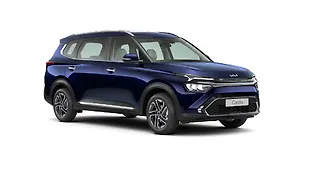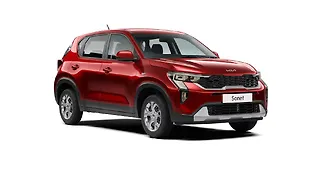Introduction

For those not in the know, the Rio is to Kia what the i20 is to Hyundai. A premium hatchback that's big on style but not exactly heavy on the pocket. Now, the i20 and the Rio might be siblings - Kia and Hyundai are part of the same automotive conglomerate, after all - but these are based on different platforms.
The Kia Rio uses the same underpinnings, same electrical architecture, and it sits on almost the same wheelbase as the Hyundai Verna, not the i20. Not surprisingly, the two feel quite similar - if not identical - when it comes to driving.
But before we get into those details, first a litte bit about Kia, India, and how the two intend on living together.
Kia India Plans

Kia will launch its first car in India next year. But, it won't be the Rio you´ll see then . The Korean car maker will come with a Creta-based, Creta-sized, and Creta-rivalling SUV. It will be pricier than the Creta though - as would every Kia compared to a similar Hyundai.
The SUV will be followed by an Innova-rival, and then we should see the Rio, but in sedan form, to take on the likes of the Honda City and the Hyundai Verna. Then there will be a sub-4m EcoSport-rivalling SUV. And, only after all these launches will we see the Rio in hatchback form. Or, as is the case here, as a cross-hatch.

The X-line way

Now, we drove the Rio in X-line guise, which is Kia speak for a jacked-up cross-hatch. So, this Rio gets some body cladding, more ground clearance, skid plates as part of the front and rear bumpers, and roof rails. The rest is your everyday Rio hatchback, which in itself is quite a good looking car. So, that's one massive box ticked.
Inside, you get good quality plastic, close shut lines, loads of equipment, and decent passenger space. Given that the Rio is based on the Verna, the rear knee room was never going to be outstanding. But, that´s acceptable, especially for a hatchback. The boot though is quite big.

The drive

Another big positive for the Rio is its driving position. The front seats are large and supportive, and because you sit higher in the X-line than a typical hatch, the visibility is very good; it just makes driving a lot easier. What's more, the steering is light, the controls are logically placed, and the clocks are both easy to read and informative.
The ride though - and that's because this is a Europe-spec car - is a tad stiff. But, on the whole, the Rio isn't exactly a very sporty car to drive. Yes, it is unwavering in a straight line at speeds even through cross winds. And yes, it handles the long sweeping corners with the sort of tautness that inspires confidence.

But, in terms of driver connect, the Rio doesn't score too well. The steering is slow and mute; the engine - and we had the 120bhp plus, 1.6-litre petrol unit at our disposal - lacks grunt; and nothing about the hatchback - be it handling, turn-in or balance - will have you grinning from ear to ear.
So, in that sense, it's quite like the Hyundai Verna; only more taut. And with a more youthful appeal.
Conclusion

The astute among you would have noticed that I didn't get into the details regarding features of the hatchback. And, that's because when the Rio does come to India, it will have the most comprehensive feature list in its class. Not my words, Kia's.
Is the Rio worth looking forward to then? Absolutely. And more so in the X-Line trim. It looks great, it is well built, and though it won't get the enthusiast in you stirring, it should work well as your everyday family runabout.


























